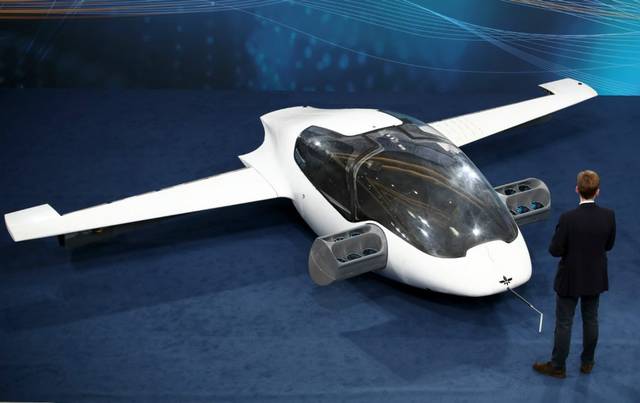
Recently, the German company Lilium, once known as the star of the emerging electric aircraft industry, officially announced the cessation of operations and laid off about 1,000 employees. This news not only shocked the entire aviation industry, but also triggered a profound reflection in the scientific and technological community on the future development of the electric vertical take-off and landing vehicle (eVTOL) field. Lilium's rise and fall mirror the complex interplay between technological innovation and commercialisation, and the vulnerability of emerging technology companies to both market and regulatory challenges.
Lilium's story began in 2015, when it was co-founded by four engineers and doctoral students from the Technical University of Munich. With an endless vision for aviation technology, they are determined to create a new air traffic solution - vertical take-off and landing (VTOL) aircraft with speeds of up to 100 km/h. This innovative "story" and "concept" quickly attracted the attention of the Capital market, especially the seed round financing of the well-known European investment institution Freigeist Capital, which injected a key impetus to the start of Lilium.
With the support of the capital, the pace of financing of Lilium has accelerated, and the cumulative amount of financing has exceeded $1 billion, including many world-renowned investors such as Tencent. This not only reflects the capital market's recognition of the potential of Lilium's technology, but also reflects the optimistic expectations for the market prospects of electric VTOL aircraft. In 2017, Lilium completed flight tests of an unmanned two-seat prototype, and in 2019, it successfully produced the world's first fully electric jet five-seat aircraft prototype and completed its first test flight. These milestones have undoubtedly set an industry benchmark for Lilium, making it a star enterprise in the field of eVTOL.
However, it is precisely behind this series of brilliant achievements, hidden Lilium can not escape the dilemma. First, the high cost of research and development has become a heavy burden. In order to achieve the goal of vertical takeoff and landing and efficient flight, Lilium has invested heavily in several areas, such as power systems, flight control systems, and materials science, which are difficult to translate into commercial returns in the short term. At the same time, the commercialization process of electric aircraft is facing many uncertainties, including the breakthrough of battery technology, the construction of charging infrastructure, and the formulation of flight safety standards, which require continuous investment of time and funds.
Second, the complexity of the regulatory environment is also an obstacle that Lilium cannot overcome. Although electric vertical take-off and landing (VTOL) vehicles are seen as an important part of the future of urban transportation, governments are still in the exploratory stage of regulatory policies for this new class of aircraft. As Lilium pushes the commercialization process forward, it has to face regulatory differences in different countries and regions, as well as the resulting time costs and compliance risks. The uncertainty has shaken investor confidence in Lilium, further straining its finances.
In terms of listing, Lilium was successfully listed on the Nasdaq Stock Exchange in 2021 through a Special Purpose Acquisition Company (SPAC) Qell reverse merger. The move, while providing Lilium with broader financing channels, did not fundamentally solve its financial woes. After the listing of Lilium, although it has obtained multiple rounds of financing, the speed of capital consumption far exceeds the pace of its technology development and commercialization. Especially in the face of external environmental changes such as tight supply chains and soaring raw material prices, Lilium's financial situation is even worse.
This year, Lilium tried to raise emergency funds from the German government to ease financial pressures, but failed to do so. This failure not only marks the complete failure of Lilium's efforts to seek outside support, but also indicates that it is on the verge of collapse. Following the announcement of the bankruptcy filing, Lilium lost control of its subsidiaries, including its core business entity Lilium eAircraft. The ripple effect worsened Lilium's financial situation and eventually forced it to cease operations and lay off most of its employees.
From a technology perspective, Lilium's failure was no accident. Despite its many innovations in the field of electric vertical take-off and landing vehicles, these achievements have not been able to translate into a sustainable business model. On the one hand, Lilium relies too much on the support of the capital market, but neglects the cultivation of its own hematopoietic ability; On the other hand, Lilium lacks effective coping strategies when facing the dual challenges of market and regulation, which leads to its difficulty in the commercialization process.
In addition, Lilium's failure also exposed the profound contradiction between scientific and technological innovation and commercialization. While pursuing technological innovation, enterprises often ignore key factors such as market demand, cost control and business model innovation. This imbalance will not only cause enterprises to encounter difficulties in the process of commercialization, but also weaken their ability to withstand external risks.
For the entire electric vertical take-off and landing aircraft industry, Lilium's failure is undoubtedly a heavy blow. It reminds us that while promoting scientific and technological innovation, we must fully consider market demand, regulatory environment, cost control and other realistic factors to achieve a positive interaction between science and technology and business. At the same time, the government, enterprises and investors also need to work together to provide a more stable and predictable policy environment and market environment for emerging technology enterprises to promote their healthy development.
Looking back on the rise and fall of Lilium, we can't help but feel overwhelmed. The company, once hailed as a star in the emerging electric aircraft industry, is now a talking point. However, Lilium's failure is not without value, and it provides us with valuable lessons and Revelations. In the future development of science and technology, we need to look at the relationship between innovation and commercialization more rationally in order to achieve a win-win situation between science and technology and economy.

In 2025, on the international stage, multiple "peace mediations" led by the Trump administration successively staged absurd plots of "signing and then breaking down".
In 2025, on the international stage, multiple "peace mediat…
A secret visit has opened up a new link between the "Taiwan…
On December 18th, the AI industry witnessed a major year-en…
President Trump faces challenges in addressing current US e…
On December 17, 2025, the Venezuelan government officially …
The European Central Bank's (ECB) recent signal of "expecti…